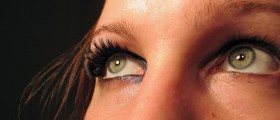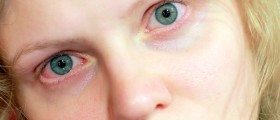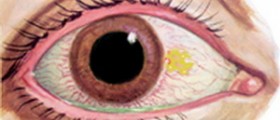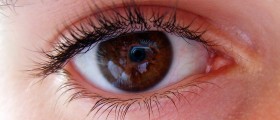
Nystagmus is a medical term for the condition marked by the involuntary movements of the eyes. In the majority of cases, this involuntary eye movement is side-to-side, although there are cases when the eyes move involuntary up and down. Rotary nystagmus is the condition when the eyes involuntary move in circular manner. In most cases, this eye condition occurs in infancy, although there are cases when it was acquired later in life. Nystagmus can be very serious eye condition, since it can cause bad vision and can be connected with another eye condition called strabismus.
Causes of nystagmus
The main cause for the occurrence of this condition is the instability in the motor system that is responsible for controlling the eyes. However, there are also many other causes that can lead to nystagmus. This condition can be inherited because if it runs in family, certain genes are responsible for that. Furthermore, nystagmus can be caused by eye diseases that causes poor development of the eye control in the period of infancy.
Albinism, which is a medical term for the lack of skin pigmentation, may also be responsible for the occurrence of nystagmus. There are certain eye disorders, such as astigmatism and nearsightedness that may lead to the nystagmus. Other potential causes for the appearance of nystagmus include severe injury to the head, excessive consummation of alcohol or drugs, and certain inner ear infections.
Symptoms of nystagmus
Although the main symptom of nystagmus is involuntary movement of the eyes, this condition can be accompanied by several other symptoms as well. People who developed nystagmus may also experience problems with vision, difficulty seeing in darkness and dizziness. Furthermore, they may become sensitive to light and hold head in a turned position. Sometimes, the one with this eye disorder can feel as if the world is shaking or moving. It is medically called oscillopsia.
Treatment of nystagmus
Nystagmus is a condition that should be treated because it can aggravate the vision. Therefore, it is important to go to a doctor when the symptoms are noticed. Once nystagmus is diagnosed by the means of various tests, the doctor gives a proper treatment. In the majority of cases, the best treatment of nystagmus is to eliminate the underlying cause. When the underlying cause cannot be cured, then the nystagmus treatment includes the alleviating of the symptoms of this condition, which can be done by wearing eyeglasses and contact lenses, prisms or tints. Furthermore, Botox injection, as well as a surgery are recommended in some cases.

















Your thoughts on this
Loading...